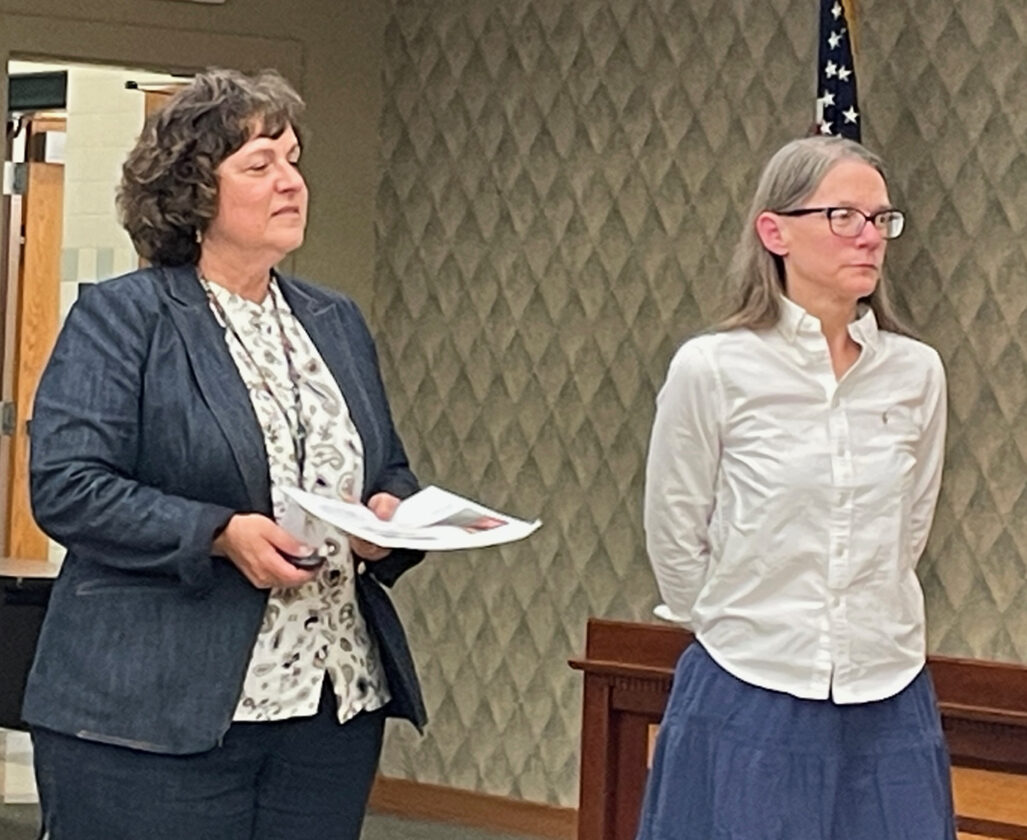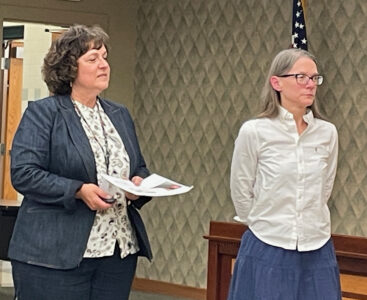Jamestown Public Schools BOE Hears Literacy Update

From left, Jamestown Public Schools Assistant Superintendent for Instruction and School Improvement Tina Sandstrom, and JPS Coordinator of Literacy Dr. Jennifer Aaron present a literacy update to the board of education. P-J photo by Michael Zabrodsky
The Jamestown Public Schools Board of Education recently heard an update on its kindergarten through eighth grade English Language Arts curriculum.
JPS Assistant Superintendent for Instruction and School Improvement Tina Sandstrom, and JPS Coordinator of Literacy Dr. Jennifer Aaron presented the literacy update.
“As you know, this was a multi-year process, from investigating the curriculum to piloting implementation, and all that ongoing growth that has been happening since the 2021-22 school year,” Sandstrom said. “And so here we are in the 2025-26 school year. And we are in year three of implementation.”
Sandstrom said that during the implementation years there was a lot of focus on professional development in the science of reading. She said that 83 percent of teachers have received training for language essentials for teachers of reading and spelling (LETRS).
In 2023, after a year of researching and piloting two different K-8 curricula, Jamestown adopted HMH Into Reading (K-6) and Into Literature (7-8), a theme-based spiralling curriculum.
According to jpsny.org, in K through second grade, the focus in the early grades is on phonemic awareness, the ability to manipulate sounds without print, and phonics, making the connection between sound and print. In third- through sixth-grades, while phonics and oral language are still addressed, the primary focus is learning comprehension strategies to tackle increasingly difficult texts. In 7-8, Into Literature builds on what students have learned in K-6 Into Reading.
“That’s how the curriculum is built. It’s built on strong research and reading. So we want to stay true to that,” Sandstrom said.
Sandstrom added that the district will continue with three focus strategies: data – which continues deepening the district’s understanding of data and connecting to resources within the curriculum while working with building leaders to monitor achievement and growth; targeted instruction – which supports teachers with small group planning and instruction while creating individualized learning based on data; and instructional collaboration – which addresses individual educator needs, and fostering professional growth while enhancing student outcomes through improved instructional practices.
“The process that we use to select the literacy program that we’re using relied heavily on our staff doing the research, and making the decision themselves as to what fit, what we know about reading, the science of reading, and what research showed us was the best path forward,” Whitaker added that one of the most important aspects the district can do with the ELA curriculum is to stay true to it as the district moves forward.
“The most important thing is to implement it with fidelity,” Whitaker said.



